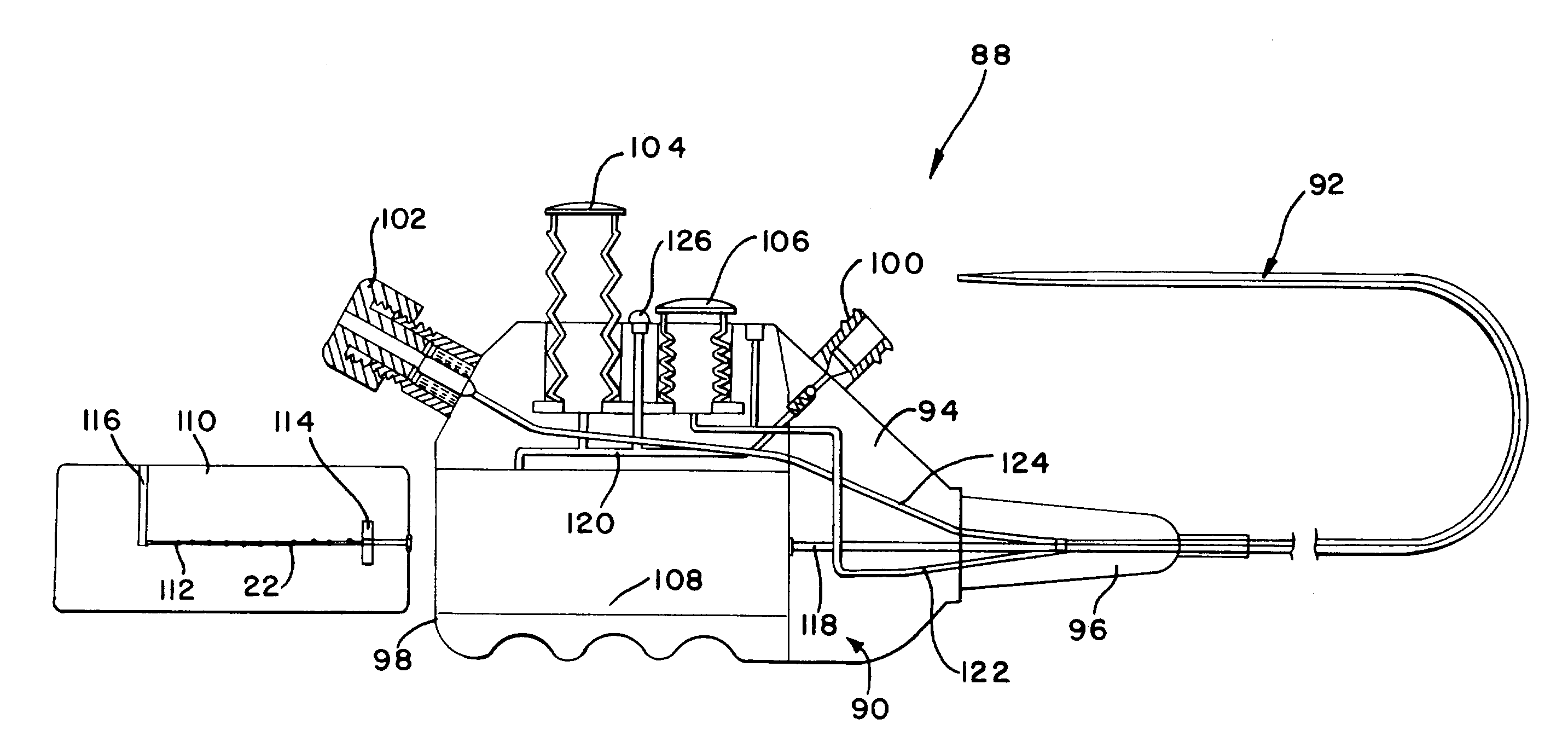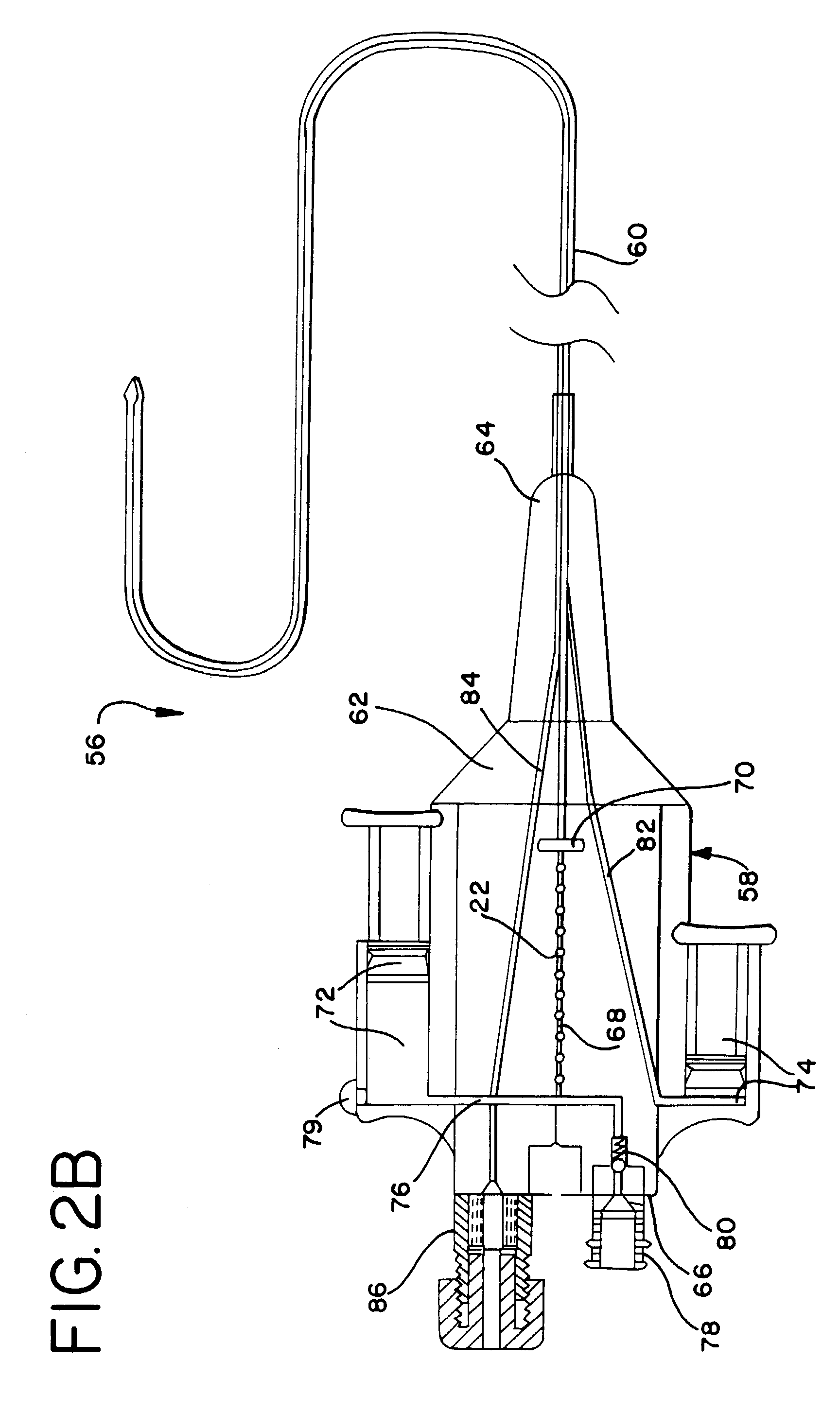Method and apparatus for treating a desired area in the vascular system of a patient
a vascular system and desired technology, applied in the field of delivery of treatment elements, can solve the problems of aneurysmal expansion, increased blood flow, and enlarged intraluminal passageway, and achieve the effect of preventing intimal hyperplasia, and reducing the risk of restenosis
- Summary
- Abstract
- Description
- Claims
- Application Information
AI Technical Summary
Benefits of technology
Problems solved by technology
Method used
Image
Examples
Embodiment Construction
[0038]FIG. 1 depicts one embodiment of the present invention in general diagrammatic form for ease of initial understanding. Shown in FIG. 1 is an elongated catheter 2 having a proximal end portion 4, a distal end portion 6, and at least one lumen 8 extending therebetween. The catheter is sized for insertion of the distal end portion through the vascular system of a patient to a selected area to be treated, such as the site of a balloon angioplasty procedure or other opening procedure, such as an atherectomy, in a coronary artery. This may be carried out, for example, by inserting the catheter percutaneously into a femoral artery and advancing the catheter over a typical guide wire 10 upwardly through the descending aorta, over the aortic arch, downwardly through the ascending aorta and into the particular coronary artery that has been selected for treatment, such as a coronary artery that has been subjected to PTCA or other artery-opening procedure. Guide wires and procedures used ...
PUM
 Login to View More
Login to View More Abstract
Description
Claims
Application Information
 Login to View More
Login to View More - R&D
- Intellectual Property
- Life Sciences
- Materials
- Tech Scout
- Unparalleled Data Quality
- Higher Quality Content
- 60% Fewer Hallucinations
Browse by: Latest US Patents, China's latest patents, Technical Efficacy Thesaurus, Application Domain, Technology Topic, Popular Technical Reports.
© 2025 PatSnap. All rights reserved.Legal|Privacy policy|Modern Slavery Act Transparency Statement|Sitemap|About US| Contact US: help@patsnap.com



